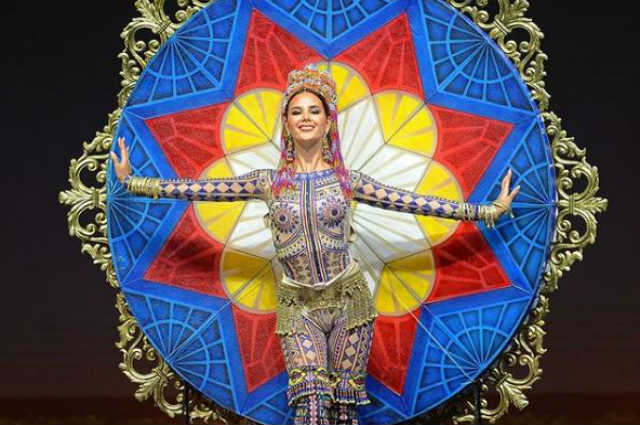

Catriona’s mentor Carlos Buendia Jr. meanwhile shared more details about Catriona’s national costume.
(Photo source: Instagram – @voguethailand/ @carlosbuendiajr/ @dyancastillejo)


Catriona’s mentor Carlos Buendia Jr. meanwhile shared more details about Catriona’s national costume.
(Photo source: Instagram – @voguethailand/ @carlosbuendiajr/ @dyancastillejo)
Actors Cesar Montano and Sunshine Cruz attended the graduation of their daughter Angelina Isabelle Cruz Montano. Angelina graduated from De La...
Actress and TV personality Kris Aquino said she is not yet fit to work because she is severely underweight. She currently...
Fans and followers of actress and TV host Kris Aquino were a bit surprise after Kris revealed that she have been...
ABS-CBN announced that actress Kathryn Bernardo will be one of the judges of “Pilipinas Got Talent.” Kathryn will join her fellow...
Jam Ignacio appeared before National Bureau of Investigation Director Jaime Santiago to face the case filed against him by DJ vlogger...
Fans and followers of actors Anthony Jennings and Maris Racal got excited after their photos were posted online. The said photos...
Vlogger and disc jockey Jellie Aw said she is no longer interested in pursuing her plans with Jam Ignacio after what...
Fans and followers of content creators Jeraldine and Joshua Blackman were saddened by the news that they have decided to go...
Kapuso artists Mavy Legaspi and Gabbi Garcia are the latest celebrities to join “PBB: Celebrity Edition Collab” as hosts. ABS-CBN and...
Actor Sam Milby revealed that he is no longer friends with singer-songwriter Moira dela Torre. He made the revelation during an...
Jam Ignacio went public and apologize to Jellie Aw after a mauling incident transpired between the two. Jam publicly apologize to...
Actor Romnick Sarmenta stated that he will not vote for any of his fellow actors running in the upcoming 2025 election....
Is actress Andrea Brillantes in love again? This is the question many netizens are asking after a video was posted online...
Jam Ignacio expressed his regrets and apologized to his fiancée, vlogger and disc jockey Jellie Aw, who accused him of mauling...
Actor Sam Milby confirmed that he and former Miss Universe Catriona Gray have broken up. Fans and followers of the two...
You must be logged in to post a comment Login